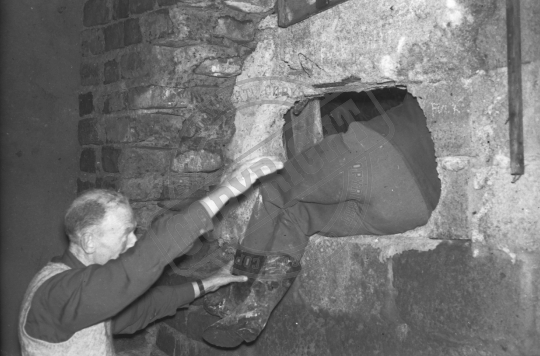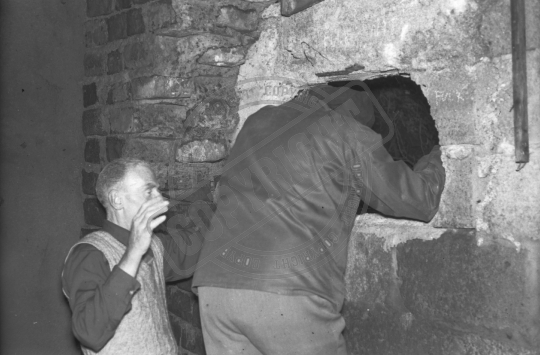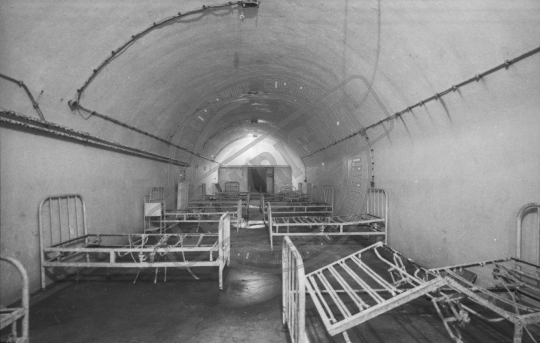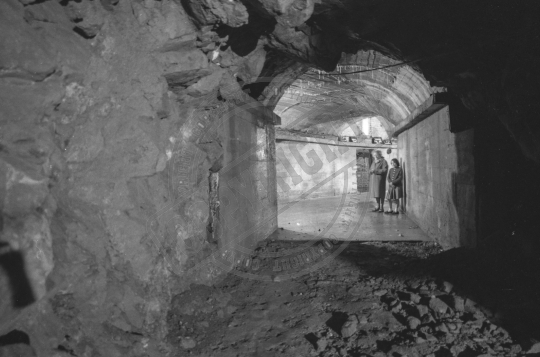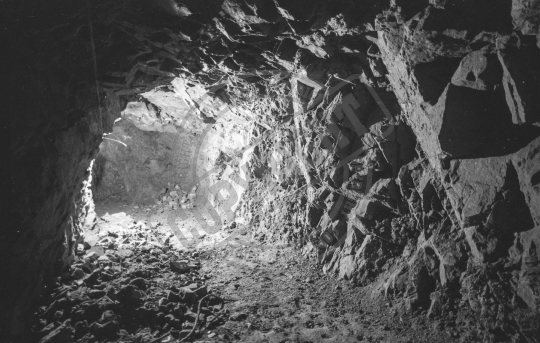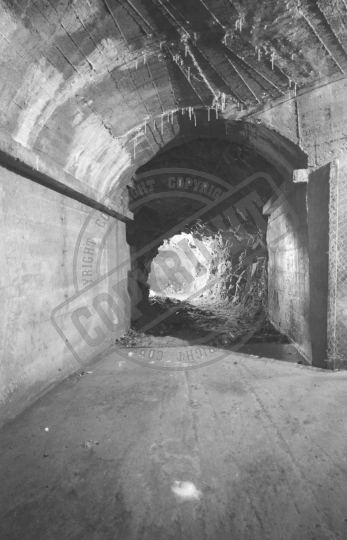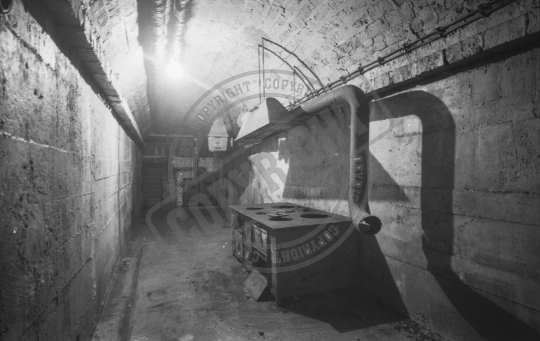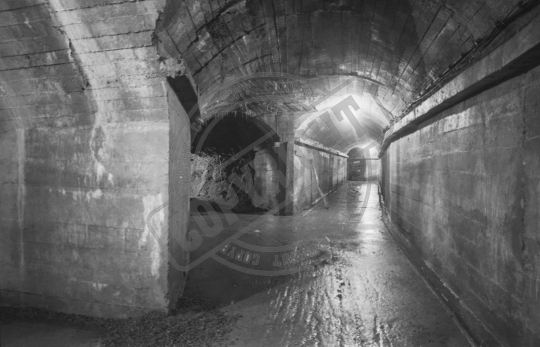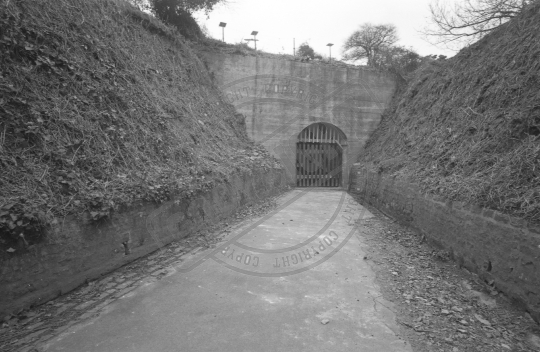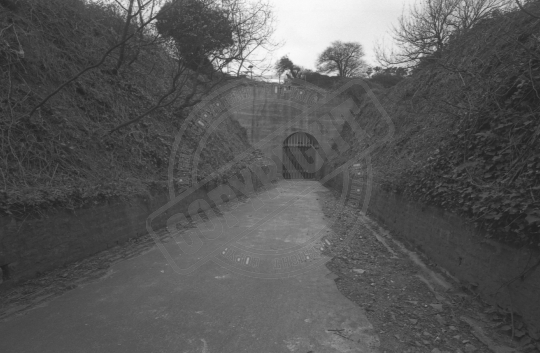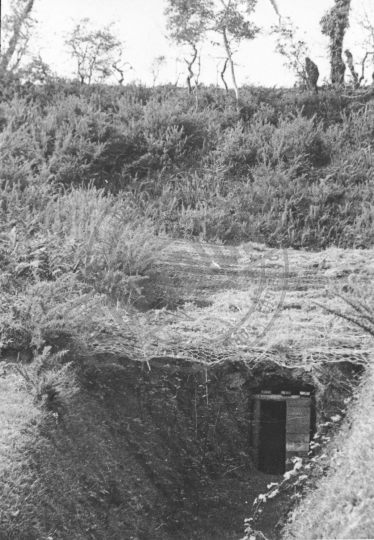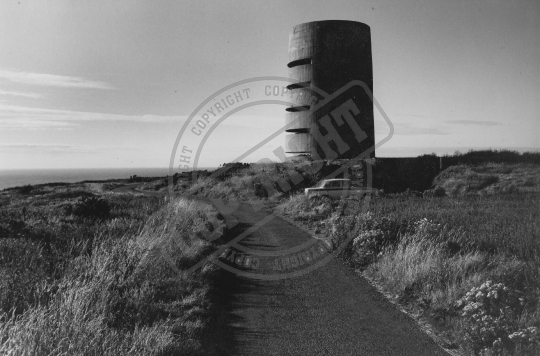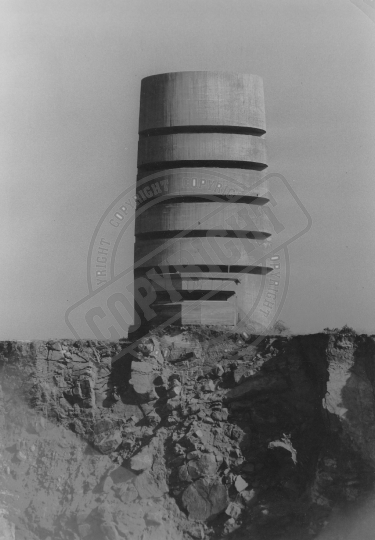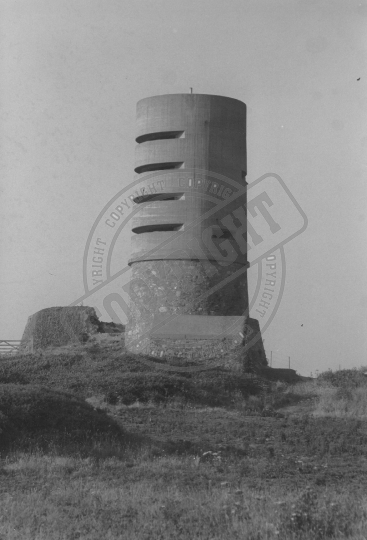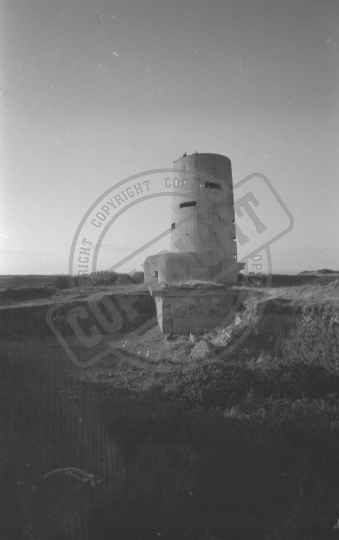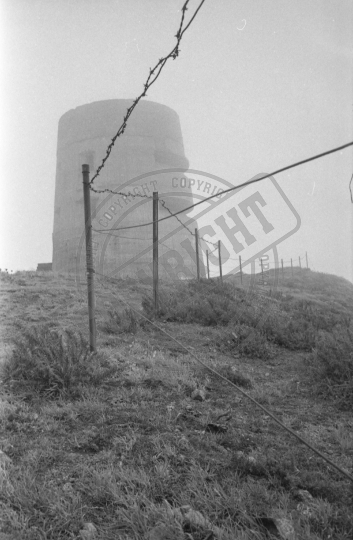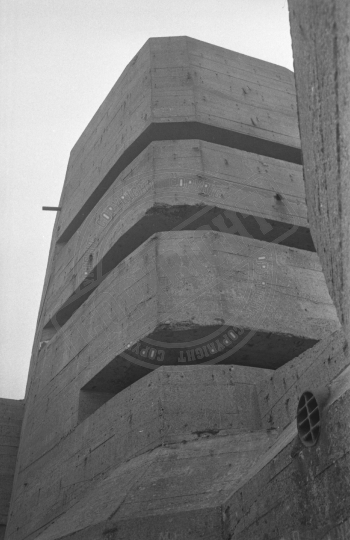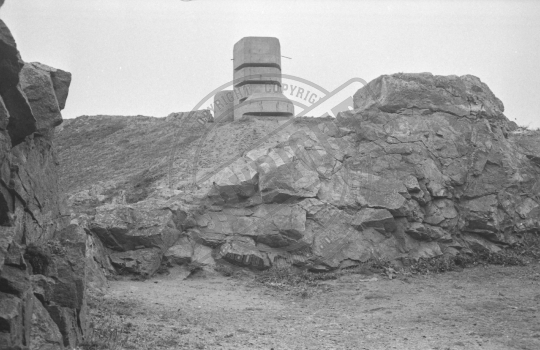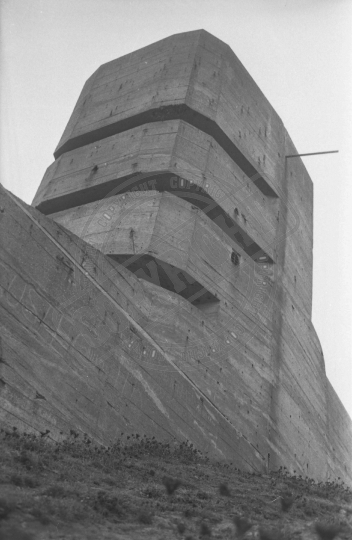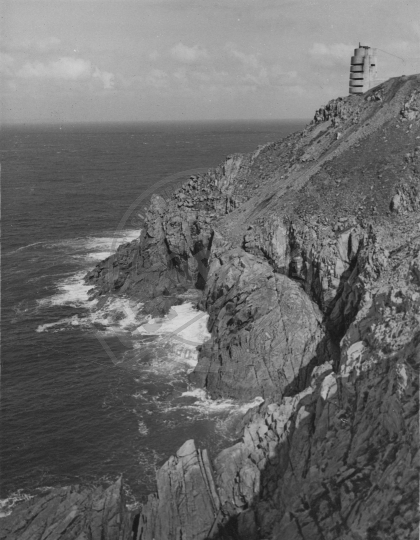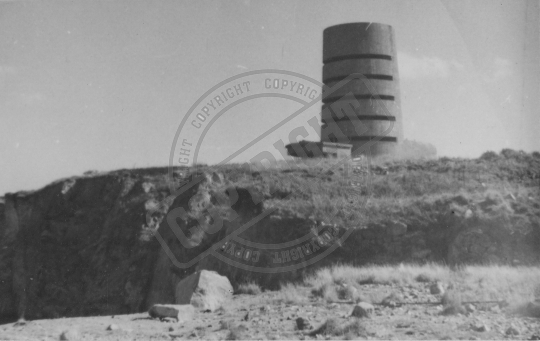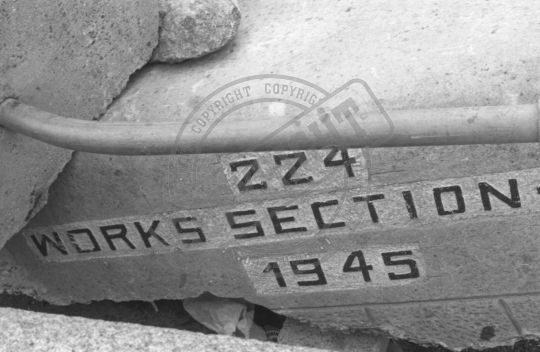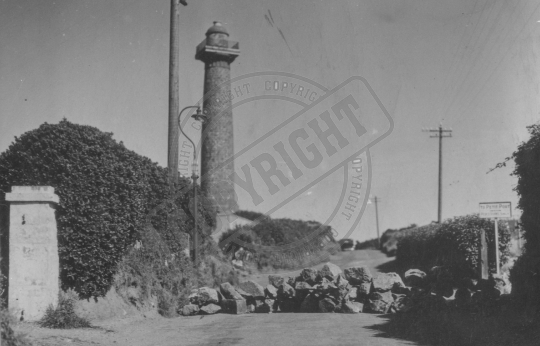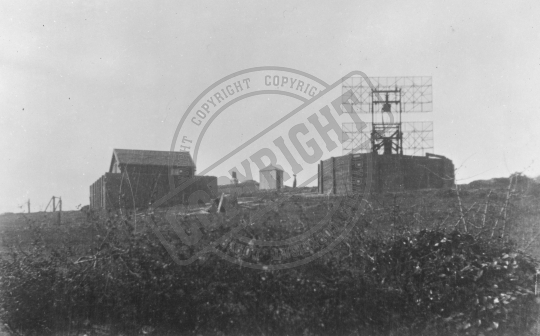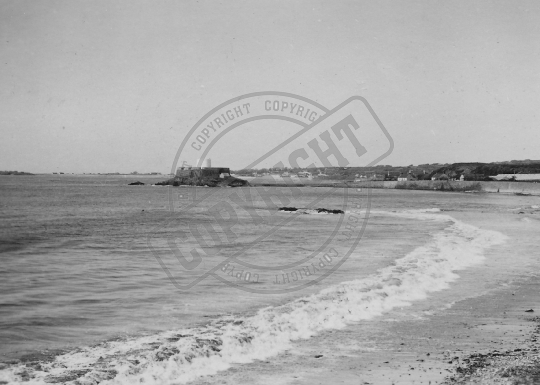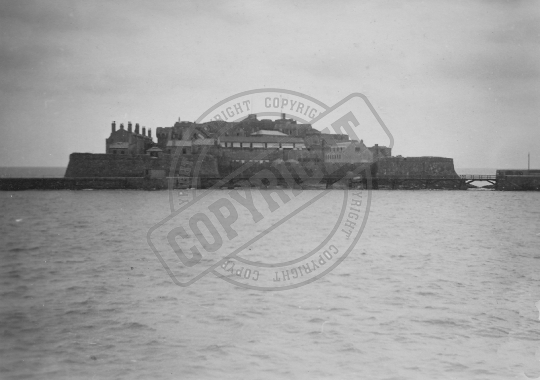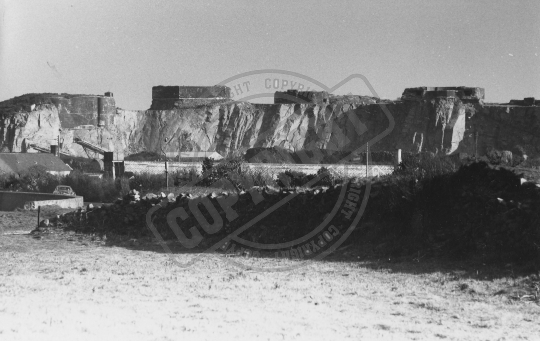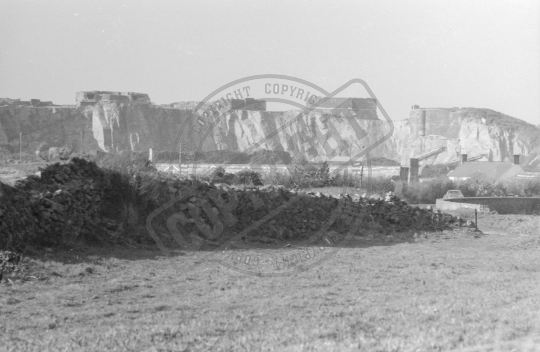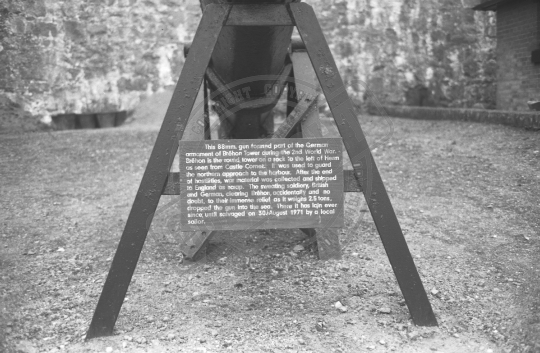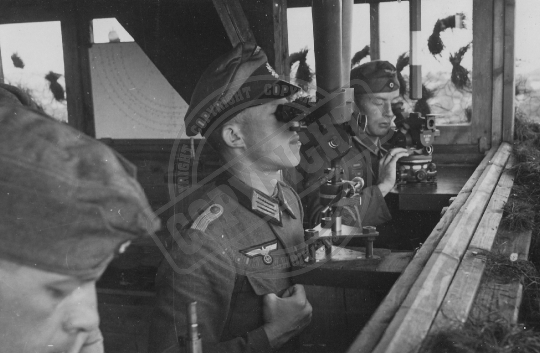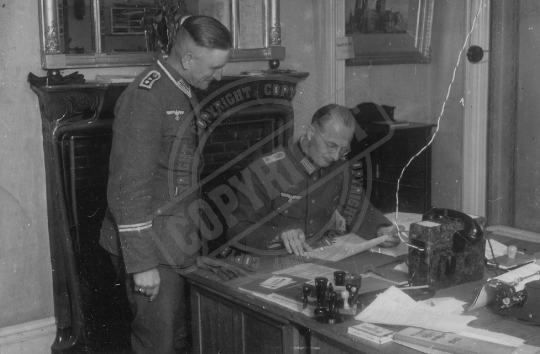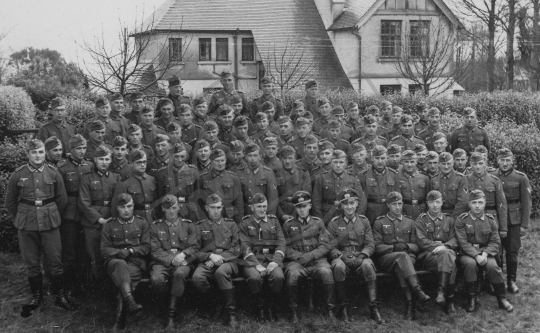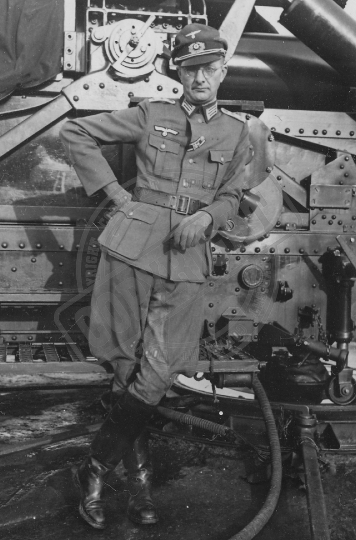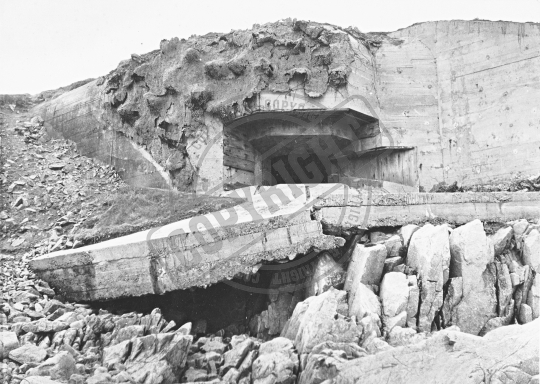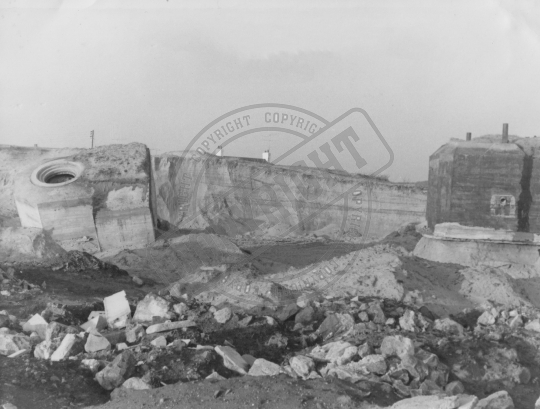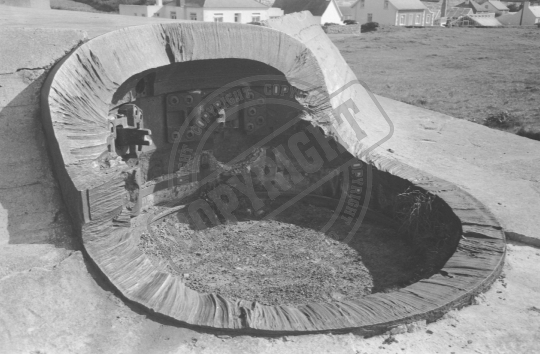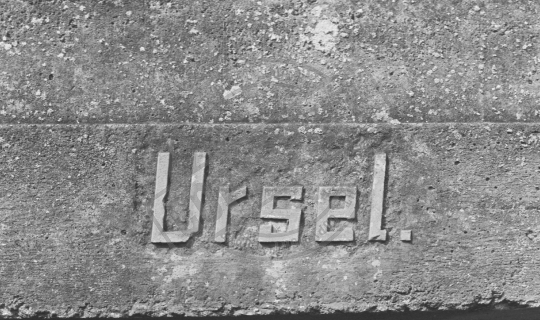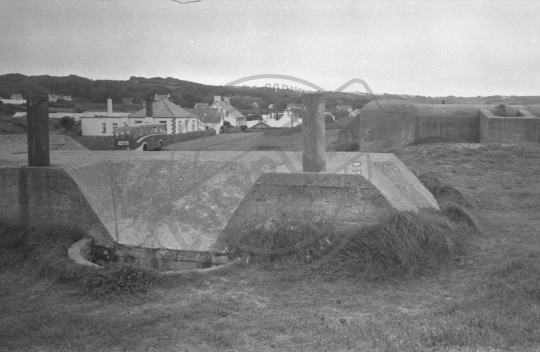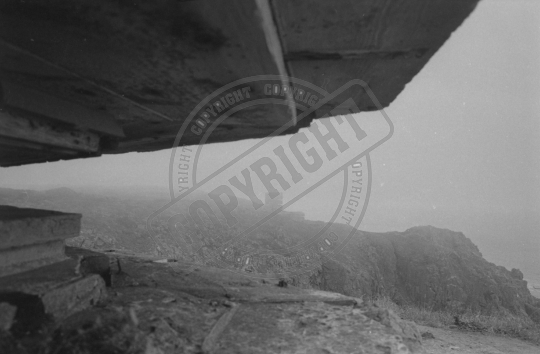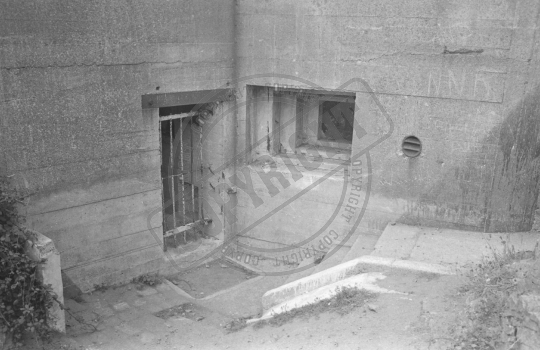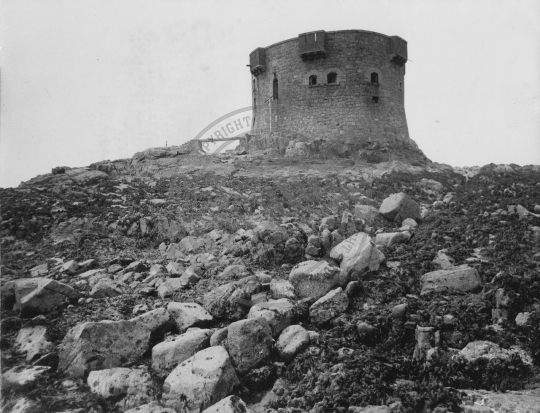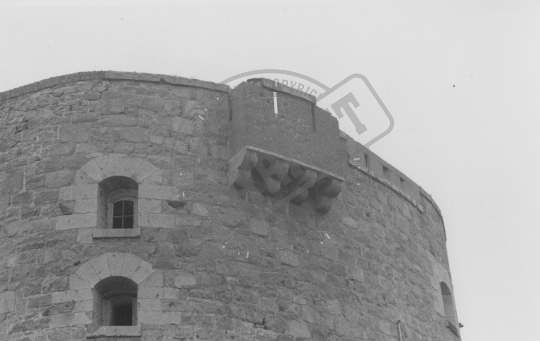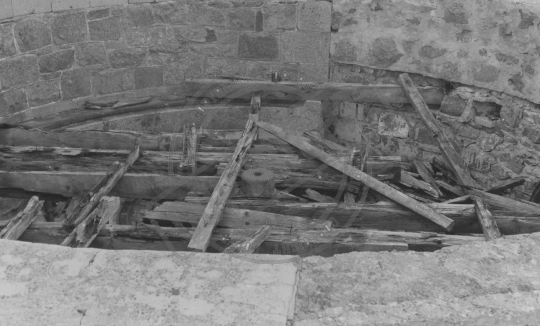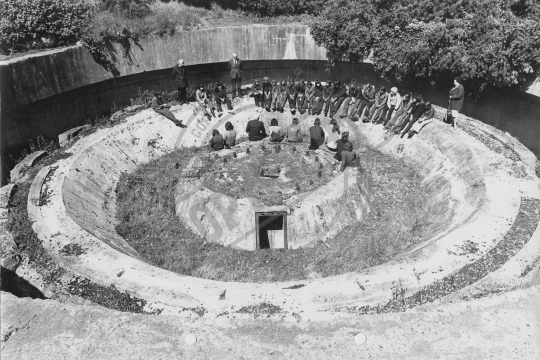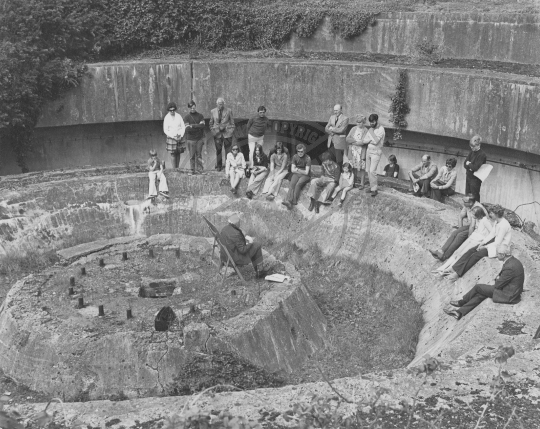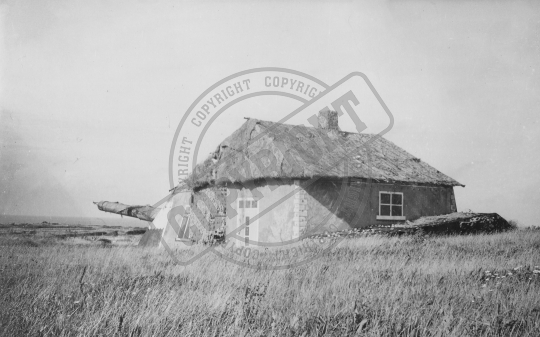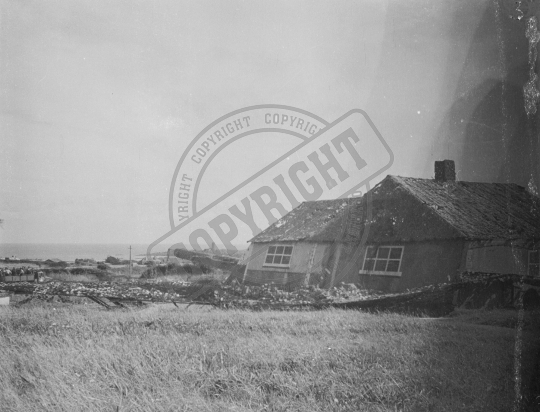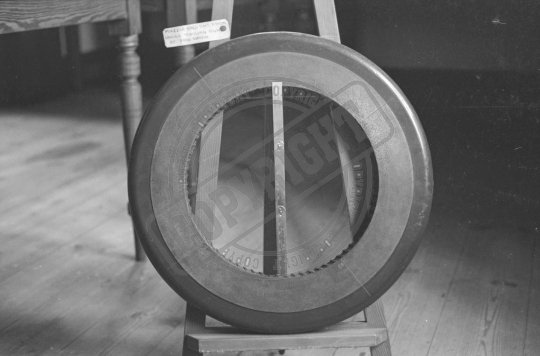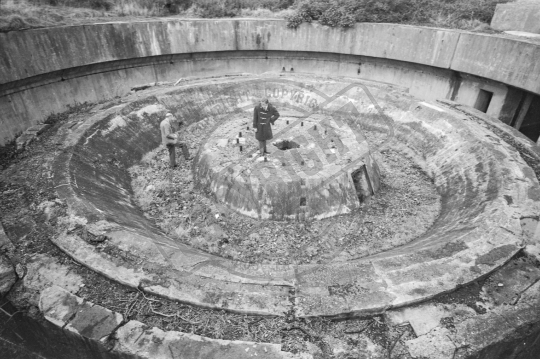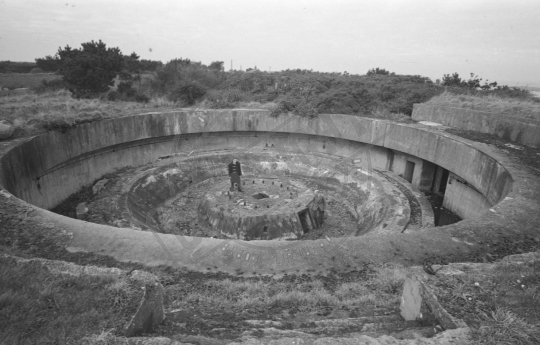Results (364)
TPL_00330
St Saviour`s tunnel which is featured in many publications as 'The tunnel under the church’ is one of the largest German tunnel complexes in Guernsey. This tunnel was originally constructed as a ration store and in 1944 it was converted into a munitions store. On 9th May 1969 Richard Heaume and John Hayes explored the remains of the tunnel and its contents which had captured the interest of many collectors ever since the scrap men had left in the 1950’s.
TPL_00329
St Saviour`s tunnel which is featured in many publications as 'The tunnel under the church’ is one of the largest German tunnel complexes in Guernsey. This tunnel was originally constructed as a ration store and in 1944 it was converted into a munitions store. On 9th May 1969 Richard Heaume and John Hayes explored the remains of the tunnel and its contents which had captured the interest of many collectors ever since the scrap men had left in the 1950’s.
TPL_00156
Post war photograph inside the large tunnel complex known as the German Underground Hospital in St Andrews showing the layout of the wards.
TPL_00155
Post war photograph inside the large tunnel complex known as the German Underground Hospital in St Andrews. This section shows the lined to unlined junction of the tunnel.
TPL_00154
Post war photograph inside the large tunnel complex known as the German Underground Hospital in St Andrews showing the unlined section of the tunnel.
TPL_00153
Post war photograph inside the large tunnel complex known as the German Underground Hospital in St Andrews. This section shows the lined to unlined junction of the tunnel.
TPL_00152
Post war photograph inside the large tunnel complex known as the German Underground Hospital in St Andrews. The stove and heating equipment can be seen.
TPL_00150
Post war photograph inside the large tunnel complex known as the German Underground Hospital in St Andrews.
TPL_00149
Post war photograph of the tunnel entrance to HO.7/40 better known as the German Underground Hospital in St Andrews.
TPL_00148
Post war photograph of the tunnel entrance to HO.7/40 better known as the German Underground Hospital in St Andrews.
TPL_00142
Post war photograph of naval direction finding tower MP1 at Chouet which fell into the quarry in 1991.
TPL_00139
Post war photograph of naval direction finding tower MP1 at Chouet which fell into the quarry in 1991.
TPL_00138
Post war photograph of Army direction finding tower M5 at Le Prevote. The structure was cladded externally with granite sets during the war which has since been removed leaving the bare concrete of the structure exposed.
OA_066
Marinepeilständen und Messtellen (Naval Coastal Artillery Direction and Range-finding Positions). Post–war view of MP 3 at Les Landes, St Ouen, Jersey, covered the sea passage between Jersey and Guernsey. This tower had Gema Seetakt radar apparatus installed that was officially named Funkmessortungsgerät West (Radio Signalling Apparatus or FuMo West).
OA_013
The German naval Tower at Chouet, Vale, designated MP 1 (Marine Peilständ und Messtellung 1). The tower fell into Mont Chouet Quarry on 22nd March, 1991. The German Army Artillery range-finding position M2 (Mebstelle 2), at the front of the tower, had fallen some years earlier in 1982.
TPL_00084
Section of concrete inscribed by the British Army with '224 Works Section RE 1945' located at St Peter Port harbour. Note RE is an abbreviation for Royal Engineers.
TPL_00083
Doyle Monument, Jerbourg. The road approaching is blocked by boulders placed by Commandos during Operation Ambassador in July 1940.
TPL_00082
German Freya radar installation near the entrance to Fort George, St Peter Port manned by the Luftwaffe.
SP_0016
Photographed from the vicinity of the Imperial hotel on 8th June 1941, this view of Rocquaine Bay shows its most obvious feature, Fort Grey. Known to locals as the 'Cup and Saucer’ an interesting feature is the Martello Tower painted white as this was subsequently camouflaged by the Germans. This Photograph is from a small collection of six taken by an unknown German soldier posted to Guernsey in 1941 with 319 Infantry Division.
SP_0015
Castle Cornet viewed from the White Rock on 9th April 1941. No German defence works are built yet, though of interest are the antennas surmounting Castle Cornet, the chimneys seen left removed post war and other structures also removed. This Photograph is from a small collection of six taken by an unknown German soldier posted to Guernsey in 1941 with 319 Infantry Division.
TPL_00134
Post war photograph showing several structures of Batterie Steinbruch prior to their removal during the quarry expansion at Les Vardes, St Sampson.
TPL_00130
Post war photograph showing several structures of Batterie Steinbruch prior to their removal during the quarry expansion at Les Vardes, St Sampson.
TPL_00129
Barrel recovered from Brehon Tower, note that the sign suggests that it is a 88mm gun but is in fact a 10.5cm K331(f) gun.
SP_0026
Inside the fire control and observation tower of Batterie Elefant, St Andrew, Guernsey. Here we see the gun control and range-taking staff at work. The tower was adjacent to the 'Paper House’. Note the range board in the background and the camouflage draped over the wooden structure.
SP_0024
The battery commander and the battery sergeant-major of Batterie Elefant inside La Jaoniere, Bailiffs Cross Road, St Andrew, Guernsey. Note the field telephone and the assortment of hand stamps on the table.
SP_0022
Group photograph showing members of artillery Batterie Elefant which was situated at Bailiffs Cross Road, St Andrew, Guernsey. The photo was taken in the grounds of what is now Les Bourgs Hospice and the building in the background is known as Les Marronniers.
SP_0021
Batterie Elefant situated at Bailiffs Cross Road, St Andrew, Guernsey consisted of three 21cm Morser 18 guns with a range of 16.7km. This was a medium howitzer that had the ability to fire at high angles of elevation. The three guns were mounted on open platforms. Here, the battery commander poses for a photograph alongside one of his guns. Note he is wearing the ribbon of the 1914 Iron Cross, 2nd Class in his second buttonhole, which he won in World War 1.
TPL_00124
The remains of the original camouflage were still visible here on a post war photograph of the 10.5cm K331(f) bunker at Fort Hommet.
TPL_00123
Post war photograph of a mortar position and a personnel bunker which were eventually buried in the sand dunes at L`Eree located between the two car parks. Messrs J&D Norman Ltd had a concession from the States of Guernsey for the removal of sand in the area.
TPL_00121
This steel turret was cut up as part of the post war scrap drive, one of the only examples still visible in Guernsey. The structure housed a number of machine guns in the turret as part of the fortification at Rocquaine, St Peters.
TPL_00115
German fortification with the name Ursel above the entrance of a bunker located at Castle Cornet.
TPL_00114
Post war photograph of a reinforced field order (RFO) personnel bunker which forms part of the defences at Rocquaine, St Peters.
TPL_00112
Post war photograph looking through the observation slit of the command post of Batterie Dollmann, Pleinmont. In the background MP4 a naval direction finding tower can be seen.
TPL_00107
Batterie Mirus, the largest German installation in the Channel Islands housed four 30.5cm naval guns, this example shows that the Germans camouflaged the structure to look like a cottage.
TPL_00103
Batterie Mirus, the largest installation in the Channel Islands housed four 30.5cm naval guns, this example shows that the Germans camouflaged the structure to look like a cottage.
TPL_00102
Muzzle section of the 30.5cm Mirus gun barrel now on display at the German Occupation Museum.



